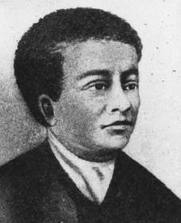 Benjamin Banneker was born in Maryland on Nov. 9, 1731. His father and grandfather were former slaves.
Benjamin Banneker was born in Maryland on Nov. 9, 1731. His father and grandfather were former slaves.
A farmer of modest means, Banneker nevertheless lived a life of unusual achievement. In 1753, the young man borrowed a pocket watch from a well-to-do neighbor; he took it apart and made a drawing of each component, then reassembled the watch and returned it, fully functioning, to its owner.
From his drawings Banneker then proceeded to carve, out of wood, enlarged replicas of each part. Calculating the proper number of teeth for each gear and the necessary relationships between the gears, he constructed a working wooden clock that kept accurate time and struck the hours for over 50 years.
At age 58, Banneker began the study of astronomy and was soon predicting future solar and lunar eclipses. He compiled the ephemeris, or information table, for annual almanacs that were published for the years 1792 through 1797. Benjamin Banneker’s Almanac was a top seller from Pennsylvania toVirginia and even into Kentucky.
In 1791, Banneker was a technical assistant in the calculating and first-ever surveying of the Federal District, which is now Washington, D.C.
The Sable Astronomer was often pointed to as proof that African Americans were not intellectually inferior to European Americans. Thomas Jefferson himself noted this in a letter to Banneker.
Banneker died on Sunday, Oct. 9, 1806 at the age of 74. A few small memorial traces still exist in the Ellicott City/ Oella region of Maryland, where Banneker spent his entire life except for the Federal survey. It was not until the 1990s that the actual site of Banneker’s home, which burned on the day of his burial, was determined.
In 1980, the U.S. Postal Service issued a postage stamp in his honor.
Banneker’s life is inspirational. Despite the popular prejudices of his times, the man was quite unwilling to let his race or his age hinder in any way his thirst for intellectual development.




